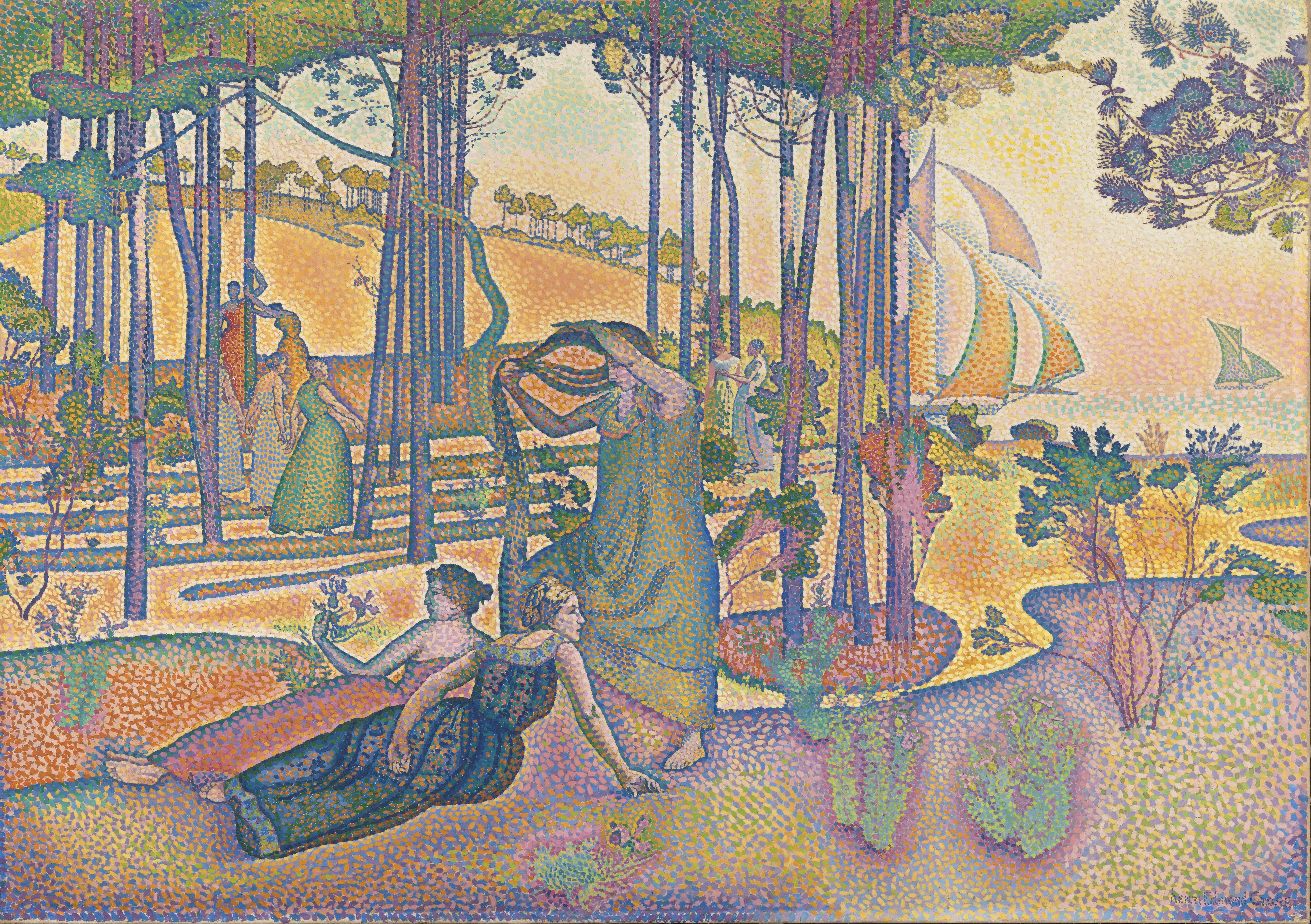|
Neo Impressionists
Neo-Impressionism is a term coined by French art critic Félix Fénéon in 1886 to describe an art movement founded by Georges Seurat. Seurat's most renowned masterpiece, ''A Sunday Afternoon on the Island of La Grande Jatte'', marked the beginning of this movement when it first made its appearance at an exhibition of the Société des Artistes Indépendants (Salon des Indépendants) in Paris. Around this time, the peak of France's modern era emerged and many painters were in search of new methods. Followers of Neo-Impressionism, in particular, were drawn to modern urban scenes as well as landscapes and seashores. Science-based interpretation of lines and colors influenced Neo-Impressionists' characterization of their own contemporary art. The Pointillist and Divisionist techniques are often mentioned in this context, because they were the dominant techniques in the beginning of the Neo-Impressionist movement. Some argue that Neo-Impressionism became the first true avant-garde m ... [...More Info...] [...Related Items...] OR: [Wikipedia] [Google] [Baidu] |
A Sunday Afternoon On The Island Of La Grande Jatte
''A Sunday Afternoon on the Island of La Grande Jatte'' () was painted from 1884 to 1886 and is Georges Seurat's most famous work. A leading example of pointillist technique, executed on a large canvas, it is a founding work of the neo-impressionist movement. Seurat's composition includes a number of Parisians at a park on the banks of the River Seine. It is held in the collection of the Art Institute of Chicago. Background Georges Seurat painted ''A Sunday Afternoon'' between May 1884 and March 1885, and from October 1885 to May 1886, focusing meticulously on the landscape of the park and concentrating on issues of colour, light, and form. The painting is approximately in size. Seurat completed numerous preliminary drawings and oil sketches before completing his masterpiece. One complete painting, the study featured to the right, measures 27 3/4 x 41 in. (70.5 x 104.1 cm) and is on display in the Metropolitan Museum of Art. Inspired by optical effects and perception inhere ... [...More Info...] [...Related Items...] OR: [Wikipedia] [Google] [Baidu] |
Michel Eugène Chevreul
Michel Eugène Chevreul (; 31 August 1786 – 9 April 1889) was a French chemist whose work contributed to significant developments in science, medicine, and art. Chevreul's early work with animal fats revolutionized soap and candle manufacturing and led to his isolation of the Heptadecanoic acid, heptadecanoic (margaric), stearic, and oleic acid, oleic fatty acids. In the process, Chevreul became the first scientist to define the concept of a chemical compound and the first to formally characterize the nature of organic compounds; he is consequently considered a founder of modern organic chemistry. In the medical field, Chevreul was first to demonstrate that diabetes, diabetics excrete glucose in the urine and to isolate creatine. Chevreul's study of textile dyes while director of the Gobelins Manufactory in Paris led to color theory, color theories that "provided the scientific basis for Impressionist and Neo-Impressionist painting." Chevreul is one of the List of the 72 name ... [...More Info...] [...Related Items...] OR: [Wikipedia] [Google] [Baidu] |
Symbolism (arts)
In works of art, literature, and narrative, a symbol is a concrete element like an object, character, image, situation, or action that suggests or hints at abstract, deeper, or non-literal meanings or ideas.Johnson, Greg; Arp, Thomas R. (2018). ''Perrine's Literature: Structure, Sound and Sense, Third Edition''. Cengage Learning. pp. 286-7: "A literary symbol is something that means more than what it suggests on the surface. It may be an object, a person, a situation, an action, or some other element that has a literal meaning in the story but that suggests or represents other meanings as well."Kennedy, X. J.; Gioia, Dana (2007). ''Literature: An Introduction to Fiction, Poetry, Drama, and Writing, Tenth Edition''. Pearson Longman. p. 292: " a symbol: in literature, a thing that suggests more than its literal meaning. Symbols generally do not 'stand for' any one meaning, nor for anything absolutely definite; they point, they hint, or, as Henry James put it, they cast long shadows ... [...More Info...] [...Related Items...] OR: [Wikipedia] [Google] [Baidu] |
Charles Blanc for a projected "Musée des copies" that was objected to by the school's overseers, who cashiered Blanc.
He published the ''Histoire des peintres de toutes les écoles'' (Par. 1849–69, 14 vols.), which was translated into English ...
Charles Blanc (17 November 1813, Castres (Tarn) – 17 January 1882, Paris) was a French art critic. Life and career He was the younger brother of the French socialist politician and historian Louis Blanc. After the February Revolution of 1848, he was director of the Department for the Visual Arts at the Ministry of the Interior. As director of the École des Beaux-Arts he reinstituted a program of copying from casts after the antique and commissioned a series of copies of Old Masters In art history, "Old Master" (or "old master")Old Masters De ... [...More Info...] [...Related Items...] OR: [Wikipedia] [Google] [Baidu] |
Paul Durand-Ruel
Paul Durand-Ruel (; 31 October 1831 – 5 February 1922) was a French art dealer associated with the Impressionists and the Barbizon School. Being the first to support artists such as Claude Monet, Camille Pissarro, and Pierre-Auguste Renoir, he is known for his innovations in modernizing art markets, and is generally considered to be the most important art dealer of the 19th century. An ambitious entrepreneur, Durand-Ruel cultivated international interest in French artists by establishing art galleries and exhibitions in London, New York, Berlin, Brussels, among other places. Additionally, he played a role in the decentralization of art markets in France, which prior to the mid-19th century was monopolized by the Salon system. Early life and education He was born Paul-Marie-Joseph Durand-Ruel in Paris, son of Jean Marie Fortuné Durand and Marie Ferdinande Ruel. His parents, who opened an art shop in 1839, used the Durand-Ruel name for the family business. In 1851, Paul enrol ... [...More Info...] [...Related Items...] OR: [Wikipedia] [Google] [Baidu] |




